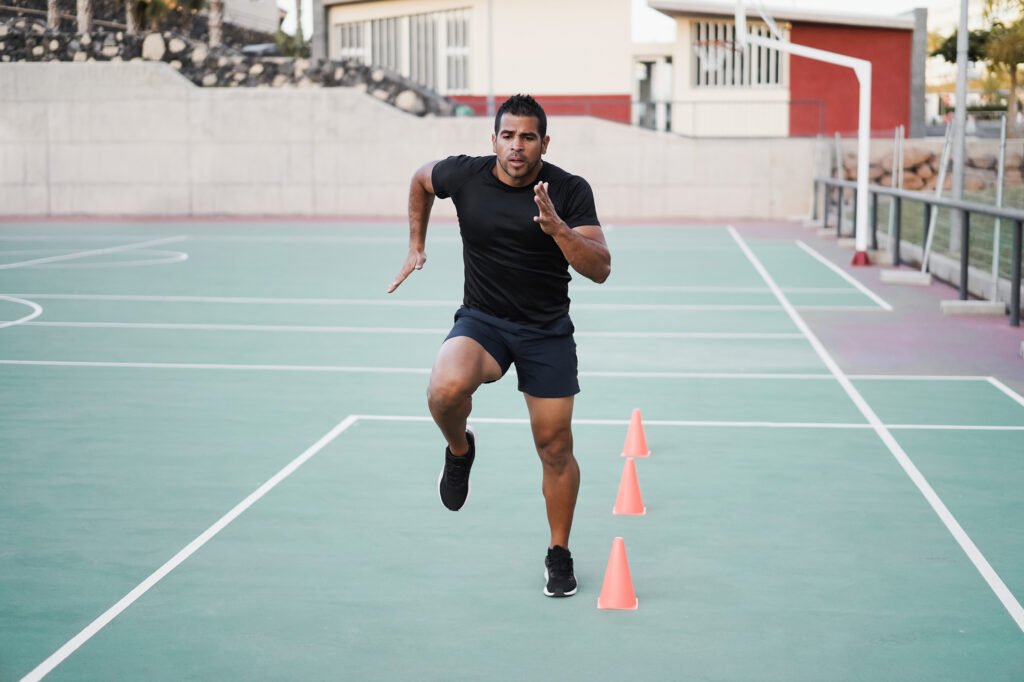Understanding and Utilizing Running Zones

Introduction: Mastering the art of running isn’t just about putting one foot in front of the other; it’s about understanding and utilizing running zones. As part of our GreenMoor Method series, this post will guide you through the nine distinct running zones, explaining their purpose and how to train in each to maximize your running performance.
The 9 Running Zones Explained: Running zones are a way to categorize training intensity. Each zone targets different physiological responses and adaptations. Let’s break down each one:
- Rest Zone: This isn’t a running zone but signifies a state of complete rest or very low activity. It’s crucial for recovery and preparing the body for future runs.
- Jog Zone: Often used for warm-ups or cool-downs, this zone involves very easy running that feels comfortable and effortless.
- Aerobic Zone 1 (Ae1): This low-intensity zone focuses on building aerobic capacity and endurance. The pace is comfortable, allowing for conversation.
- Aerobic Zone 2 (Ae2): A moderate-intensity zone where you start to push the aerobic system a bit harder. The pace is steady but still manageable for longer runs.
- Aerobic Zone 3 (Ae3): This high aerobic zone is challenging yet sustainable. It’s used for pushing endurance limits without tapping into anaerobic reserves.
- Anaerobic Threshold (AT): The pace at this threshold is challenging and marks the shift from aerobic to anaerobic running. It’s sustainable for about an hour.
- Anaerobic Zone 1 (An1): This zone involves harder efforts, like interval training at around your 10K race pace. It improves speed and anaerobic capacity.
- Anaerobic Zone 2 (An2): A more intense interval training zone, akin to your 5K race pace. It’s used to increase speed and tolerance to lactic acid.
- Anaerobic Zone 3 (An3): Involves short, intense bursts of effort at or near sprint speed, enhancing speed and power.
- Anaerobic Zone 4 (An4): The most intense zone, used for sprinting and max effort. It develops explosive power and speed.
Training in Each Zone: To effectively utilize these zones, you’ll need to:
- Understand your current fitness level and running goals.
- Use a heart rate monitor or a pace-based approach to identify your zones.
- Plan your training schedule to include workouts in different zones, based on your goals.
Zone-Based Training Examples:
- For building endurance: Focus on Ae1 and Ae2 zones.
- To improve speed: Incorporate intervals in An1 and An2 zones.
- For race preparation: Train in the AT and Ae3 zones.
The GreenMoor Method Approach: In line with the Greenmoor Philosophy, we advocate a balanced training approach. We emphasize the importance of spending most of your training time in lower zones to build a strong aerobic base, interspersed with strategic high-intensity workouts for speed and power.
Conclusion: Understanding and utilizing running zones is a game-changer in your training. It allows you to train more intelligently, ensuring each run serves a purpose towards your overarching running goals.
Apply these running zones to your training and experience the difference in your performance. Stay tuned for our next post, where we dive deeper into optimizing your biomotor for efficient running. Subscribe to our newsletter for more insights from the GreenMoor Method.





Responses